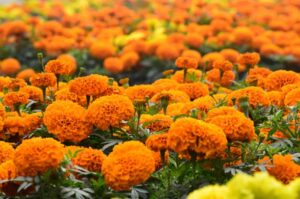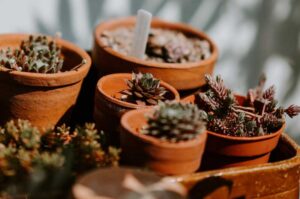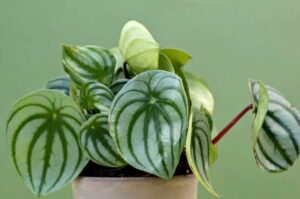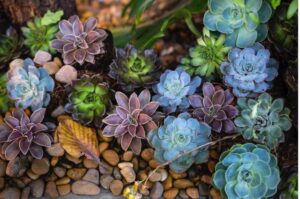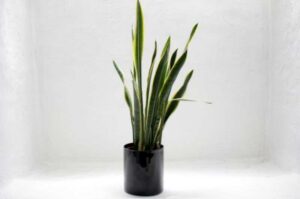How Fast Do Snake Plants Grow? (Answered)
If you are searching for an easy to care indoor plant, you can opt for the indoor, succulent Snake plant, Sansevieria. These plants are the most popular indoor plants due to their low maintenance.
Interestingly, these plants are also named mother-in-law’s tongue because of their long, sharp, and tongue-like leaves. Now you must be wondering how long it takes for Sansevieria to grow?
Snake plants grow slowly, with only a few inches of growth per season. You will only witness 3-4 new leaves in every growing season. The plant enters the dormant mode for the rest of the year, meaning there will be no growth in either the height or number of leaves.
However, the growth of Sansevieria depends upon many factors such as pot size, soil quality, humidity levels, temperatures, water needs of the plants, and many more.

Factors affecting the growth rate of your snake plants
You can measure their growth in the growing season because for the rest of the time; Sansevieria doesn’t show much development. You need a ruler to measure the inches that your plant has grown in a particular season.
Your Sansevieris can do well and can show impressive growth if you take of the below-mentioned factors:
Pot size
Ensure that the pot is big enough to let the plant grow its roots and leaves. If the pot is small, it becomes root-bound. In such cases, the plants may increase height but would not get enough space to produce leaves.
So, when your plant has grown roots completely, it’s better to transfer them to a bigger pot to allow them to grow healthier and bushier.
A general rule is that if your plant is one foot high, you require a 2-gallon size pot, and if the plant is 2 feet, you have to take a pot of 3 gallons and so on.
Humidity levels of your home
Maintaining humidity levels is essential for these plants to grow healthy. So take extra care to maintain moisture levels in your home or apartments. Keeping your surroundings warm will help retain the moisture within your home.
Water needs of the plant
In summers, water your plants once or twice a week to maintain soil moisture. However, in winters, when the plant enters dormant mode, you do not need to water it often. Lots of water can cause root rot in snake plants and droopy leaves.
Light requirement
Though the Sansevieria doesn’t demand much sunlight, placing them on the balcony will help them get adequate sunlight.
However, if you do not have a balcony, place them near a window that receives indirect sunlight. Moreover, you can also get an LED-grow-light to ensure your plant receives enough sunlight for its healthy growth.
Appropriate temperature
They do not like excessive heat and colder environments. Extreme environments are detrimental to their health. The ideal temperatures for their healthy growth are in the range of 65-75°F.
The soil quality of your plant
Soil quality is a vital factor for plant growth. Good quality soil has adequate nitrogen levels for the enhanced growth of plants. You can also add fertilizers to enrich the soil further. Some gardeners also add worm casting to their Sansevieria.
Make sure the soil is well-draining to avoid overwatering. To make the best potting mixture for these plants, do as suggested:
- Take the soil that allows proper drainage
- Take cactus soil in equal proportion
- Mix both types of soil.
- To this mixture, add a small quantity of compost.
So, now you have soil mix+cactus soil in the ratio of 1:1 and 25% of compost of the total soil.
Why do we add cactus soil and compost?
- Cactus soil will provide all the essential nutrients and minerals to the plant and provide excellent drainage.
- Compost will ensure the supply of the needed micro and macronutrients.
Adding fertilizers
Adding water-soluble fertilizers to your potting mixture once a month will ensure a regular supply of nutrients to your plant. It will result in enhanced growth of plants and shiny green leaves.
However, always consider fertilizing your plant in the growing season two or three times. But during fall, it is advisable to reduce the feed by half (50%).
Overfertilizing the plant will result in the leaf tip turning brown and withering. Eventually, the leaves may droop and die.
A weak and diluted dose of 10:10:10 fertilizers is perfect for the plant.
Pruning the plant when required
Pruning is not essential initially, but you may need to cut off the dead leaves after a couple of months.
Tips for pruning:
- Always prune your plant in summers and springs(growing season)
- Winter pruning may shock the plant
- Do not forget to disinfect the pruners or scissors to avoid pests and diseases
- Give your plant indirect sunlight after pruning
Adaptability
Though these plants are adaptable to any environment like other indoor plants, they also need some ‘me’ time to adjust to the new surroundings.
Take a note of a few tips after you bring them home:
- The plant may be under shock due to repotting, traveling or new surroundings. Give it ample time to adapt.
- Do not fertilize the plant as soon as you bring it home. The plant may be recently fertilized. So wait for two to three weeks.
- Promptly water the plant if you notice dry soil.
Pests Attack
Some common pests may attack your plant, like spider mites, mealybugs, and scales. These pests may chew off the leaves and weaken them. Therefore, keep a routine check on these pests, and if you find any pests wandering on the leaves, treat your plant with disinfectants.
There are two options:
1. Natural products
You can use neem oil and water and spray on the attacked plants.
2. Pesticides
You can use any available pesticides in the market or purchase them online. Just remember not to overdo it as the overuse may harm the soil.
Effect of season
Seasons have a direct effect on the growth of your plant. For example, this plant shows most of its growth in springs and summers, and all the leaves grow in this season. And in winters, the development is halted as the plant is in the dormant stage.
Factors that can stunt/halt the growth of your snake plants
Factors hindering the growth of Sansevieria are opposite to those that promote the development of the plant. Let’s discuss each aspect in detail to have a clear understanding:
Reducing water intake of your plants
The growth of your mother-in-law’s tongue will be stunted if you withhold the watering for one or two days. This delay in watering the plant will result in plants waiting for water intake to keep growing, consequently slower growth.
Small pot size
Using a small pot that will not allow the roots to spread can also result in stunted growth.
Low humidity levels
Lowering the humidity levels can also catalyze stunted growth. It is because these plants thrive well in ample humidity. Therefore reduced levels of moisture will not allow your plant to grow bigger.
Providing lesser sunlight
Similarly, the growth will be slowed down if you provide less sunlight than required.
How large can your snake plants grow?
Different varieties of these succulent plants grow at different heights. Here are some popular types and their growth:
| S. trifasciata Laurentii | This variety grows up to a height of 1 to 2 feet. Some plants can, however, grow up to 3 feet. And some have even grown to five feet when provided appropriate growing conditions. |
| S. trifasciata | This variety is similar in growth to S. trifasciata Laurentii and grows to a maximum of 3 feet. |
| S. cylindrica | It is the tallest variety and can grow more than 7 feet. |
| S. trifasciata hahnii | It is a dwarf variety of snake plants. It can grow only up to 4-8 inches. It has never produced more than one foot. |
How to keep a check on the undesirable growth of Snake plants
You can customize these plants by controlling their development in different ways:
- If you notice an unwanted outward growth of your plant, the easiest solution is to divide the plant. You can discard the extra or unwanted leaves.
- You can put the divided plants in different pots to get multiple plants. Since these plants have a rhizome root system, they can be quickly propagated by division.
- On the other hand, there can be an undesired upward growth, or you don’t want the leaves to grow after a certain height. In this case, you can prune off the leaf tip.
- The tip of the leaf produces a hormone responsible for its upward growth. But when you cut the leaf tip, it can no longer produce this hormone. Consequently, the leaf’s upward growth is halted.
- You can either discard the cut leaf or use it to propagate multiple plant babies.
- An interesting point to note here is that when you curb both the outward and upward growth of the plant, it finds its new ways to propagate somewhere else. And this leads to the blooming of your mother-in-law’s tongue.
- Though the plant doesn’t frequently bloom, it is left with no other choice but to bloom when it finds no way to grow in any direction.
- And after blooming, there is no formation of new leaves.
Conclusion
Snake plants are beneficial in absorbing and removing toxins from the air. Additionally, they are actively converting carbon dioxide to oxygen even during the night. Therefore, they are an ideal choice for all plant lovers.
And their minimal maintenance is the cherry-on-cake for the people with a hectic schedule. These easy-to-grow plants are almost indestructible if provided the appropriate conditions to grow.

